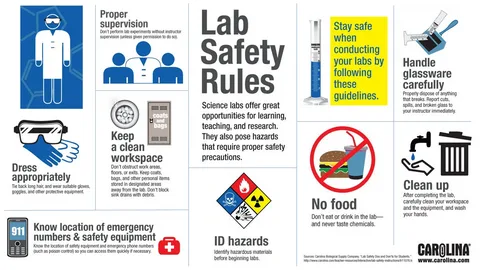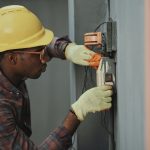Introduction
Laboratories are essential workspaces for researchers, scientists, and students. They provide a controlled environment where experiments can be conducted to achieve groundbreaking discoveries that could change the world. However, working in a lab also involves risks and hazards that can cause harm both to people and equipment. As such, it’s important to take necessary precautions to ensure safety while conducting experiments or handling chemicals. In this blog post, we will discuss common laboratory hazards, troubleshooting guide when something goes wrong, safety tips for the laboratory as well as introduce you to an innovative way of promoting lab safety – the lab safety poster. As a leading Laboratory Equipment Supplier committed to providing safe working environments for our clients’ labs around the world, we believe this article would help keep everyone safe in their laboratories!
Common Laboratory Hazards
The laboratory is a place where scientific experiments take place, and it involves working with various chemicals, equipment, and specimens. Although laboratories are essential for research purposes, they can also be dangerous if not handled properly. Therefore, scientists need to be aware of common laboratory hazards to prevent accidents.
One of the most common laboratory hazards is chemical exposure. Chemicals can cause burns or irritate the skin and eyes when they come into contact with them. Moreover, inhaling fumes from these substances can lead to respiratory problems such as asthma.
Another hazard in the lab is fires caused by flammable materials like alcohol or organic solvents. These materials should be stored in proper containers away from open flames or heat sources.
Furthermore, biological hazards such as bacteria and viruses pose a significant risk to scientists who work with them without taking adequate precautions such as proper hand hygiene measures.
Physical injuries due to slips trips and falls are also prevalent in laboratories due to cluttered floors or poor housekeeping practices that could lead them tripping over objects on the floor.
Being aware of potential lab hazards plays an integral role in preventing accidents that could result in injury or even death for researchers working within labs.
Read also: What is Hookes Law?
Troubleshooting Guide
Troubleshooting is a crucial aspect of lab safety as it helps to identify and rectify any issues before they become hazardous. When troubleshooting, it’s essential to start by identifying the problem area. This could be anything from equipment malfunctioning to environmental factors affecting your work.
Once you have identified the problem, take the necessary steps to address it. For example, if equipment malfunctions are causing issues in your lab, conduct routine maintenance checks or replace parts that are worn out.
It’s also important to document all troubleshooting activities for future reference. Keep track of what issues were encountered, how they were resolved and who was involved in the process.
Regular training sessions should also be conducted with relevant staff members on best practices for safe operation of laboratory equipment and proper handling of chemicals.
A thorough approach to troubleshooting can go a long way towards preventing accidents in the laboratory and ensuring that everyone stays safe while working.
Safety Tips for the Laboratory
When working in a laboratory, it is important to prioritize safety measures to prevent accidents and injuries. Here are some essential safety tips for maintaining a safe laboratory environment.
Firstly, always wear personal protective equipment (PPE) such as gloves, goggles, lab coats or aprons. These items can protect you from chemical spills or other hazards that may come into contact with your skin or eyes.
Secondly, be sure to handle chemicals properly by reading the label instructions and being aware of their properties before handling them. Never mix incompatible chemicals together as this could cause an explosion or release toxic gases.
Thirdly, keep the work area clean and organized to avoid clutter or tripping hazards. This includes keeping all equipment unplugged and stored away when not in use.
Additionally, ensure proper ventilation by opening windows or using exhaust fans whenever possible. This helps remove any fumes generated during experiments which could pose respiratory risks if left unchecked.
Make sure everyone in the laboratory knows emergency procedures including evacuation routes and how to use fire extinguishers correctly in case of an emergency situation.
By following these safety tips consistently while working in a laboratory setting you can significantly reduce the risk of accidents occurring while also ensuring maximum productivity from your workforce.
Conclusion
Lab hazards can cause serious injuries and even fatalities. However, with proper safety measures in place, it is possible to prevent most accidents from happening. By understanding common lab hazards and implementing a troubleshooting guide, laboratory workers can minimize risks and ensure their own safety as well as those around them.
In addition to these precautions, having a lab safety poster on display serves as an excellent reminder of the potential dangers that exist in the laboratory environment. This will help promote safe practices amongst all personnel who work there.
As leading Scientific Supply Store, we understand how important it is for professionals working in labs to remain safe at all times. We encourage everyone involved in laboratory work to take precautionary measures seriously by adhering strictly to established guidelines and adopting good habits while on duty.
Remember – your health and wellbeing should always be top priority!





